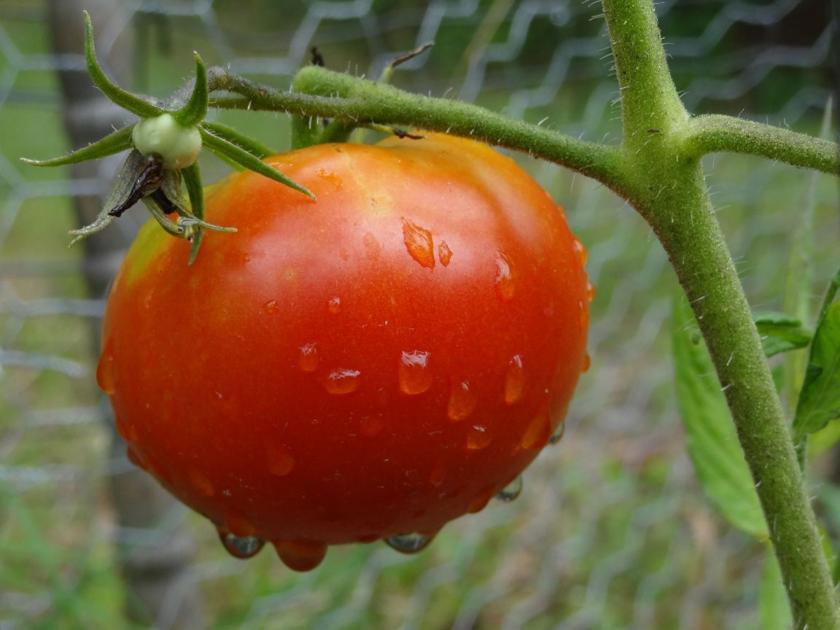GARDENER TO GARDENER: Making Tomato Plants Thrive During the Growing Season | Columns
Like most avid gardeners, I have a lot of plants both in the garden and at home. I know you’re not supposed to play favorites, but this is the time of year when I favor tomato plants over everyone else.
I start tomatoes from seeds in January and love them until they’re ready to hit the elements. They are my babies, and it breaks my heart to see them in need, so I make sure to provide them with everything they need to survive and be successful. Kind of like when I send my kid back to college and he adores them even more than plants.
This week we are going to take a look at the abiotic factors that can affect tomato plants. Abiotic diseases are caused by non-living factors, such as deficiencies or excess of nutrients and moisture, high or low pH soils, improper application of fertilizers or pesticides, and air pollution.
A soil test before planting is the best measure to make sure your soil has the nutrients it needs at first, but tomatoes are pretty heavy feeders. It may be necessary to fertilize the soil during the growing season with a method called a side dressing. This can be done at the first fruit set and again about every 6 to 8 weeks.
As much as underfertilization causes poor plant growth, so much as overfertilization causes overgrowth of plant foliage, reducing yields and quality.
The numerical formula that appears on the bags of fertilizer refers to the percentage of the three macronutrients in that product. A box that says 4-6-3, for example, contains 4% nitrogen, 6% phosphorus, and 3% potassium.
Nitrogen is the nutrient responsible for foliage nutrition, phosphorus promotes flower and fruit growth, and potassium strengthens stem and root systems.
How to dress sideways
For the gardener with a few tomato plants, apply fertilizer around the base of each plant. Dig a shallow ring 1 inch deep around each plant, about 3 to 4 inches from the base of the stem, or if you have several rows of tomatoes, dig a shallow trench between the rows about 5 inches from the stems of the plant.
Carefully sprinkle the fertilizer in the trench and cover with soil, being careful not to get any on the leaves. Do not apply the material too close to the plant or too deep, as this can burn the roots of the plant.
Blossom end rot
Blossom end rot, caused by calcium deficiency, is common and treatable. Deficiency can be exacerbated by over-fertilization, infrequent watering, and incorrect soil pH. If you are using a tomato fertilizer, the mixture is likely to contain calcium and will be included in the ingredients on the package. BER treatment begins with a soil test and the addition of lime if necessary.
The next steps are to mulch the plants, which will help moderate soil moisture, and start watering on a schedule. You can’t control the rain, but you can control when you water.
Correct watering
By following the Master Gardener program, we were introduced to abiotic diseases. Two slides caught my attention. One was a lawn with wide green stripes all over it, because the person applying the fertilizer wasn’t doing a very good job of spreading it evenly. The other was a sad plant with withered yellow leaves because an overzealous gardener drowned the poor.
It was then that I realized that abiotic factors could mean induced by human error.
So how much water should we give our tomato plants? Surprisingly, less than you think – or, more precisely, less often than you think. I was always the girl who just gave him a sip of tomato plants every morning. Well that’s not fair because it can cause shallow root systems, and we want deep roots.
Check the soil first. If the soil is moist up to 3 inches deep, delay watering for another day. One inch of water per week is sufficient if the plants are mulched. The goal is to water less often but for longer. This will help develop a deep root system that will reduce stress on the plants for extended periods when the weather is hot and dry. Ideally, water the tomatoes at ground level, around the base of the plant. This will help prevent sun scorch on the leaves and fruits.
Tomatoes, just like humans, need food, water, and a little love. See you next week, good gardening.
– Ireland, a member of the Limestone County Master Gardeners, can be contacted at [email protected]. Visit https://mg.aces.edu/limestone for more information on Limestone County Master Gardeners.

